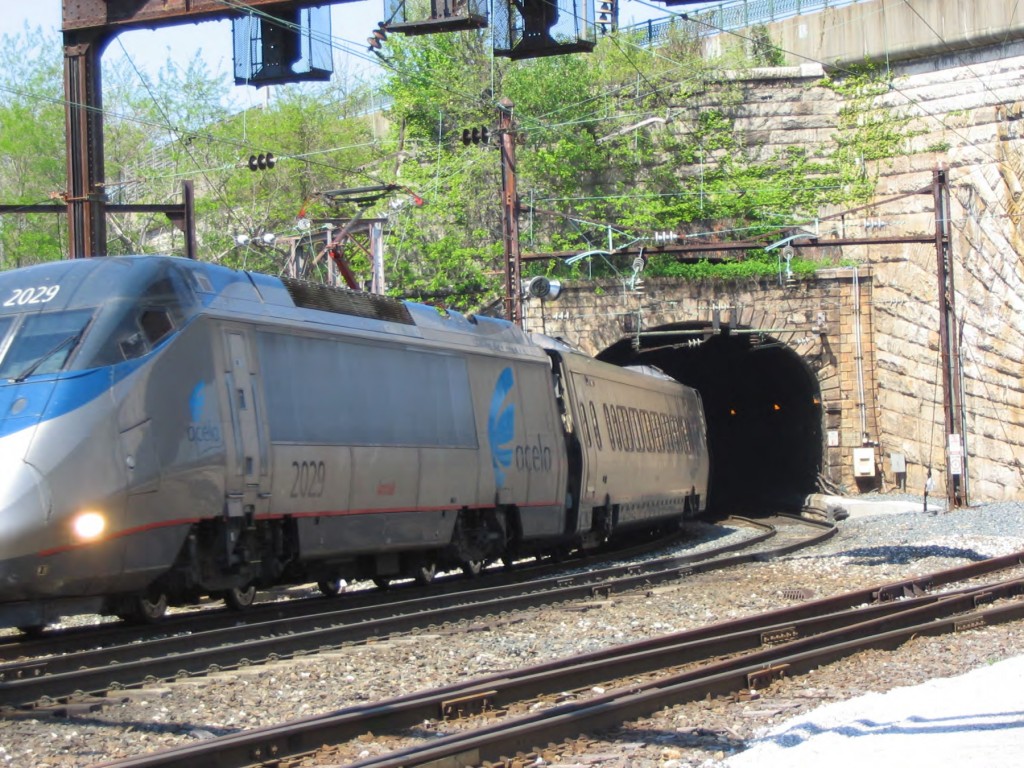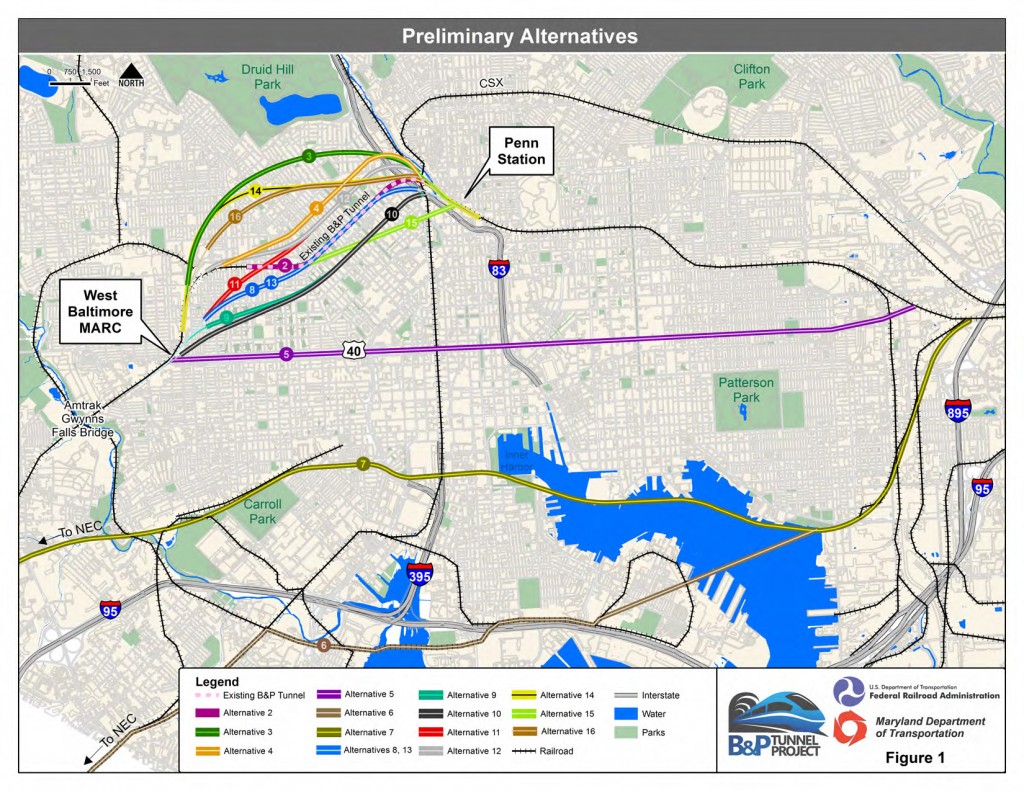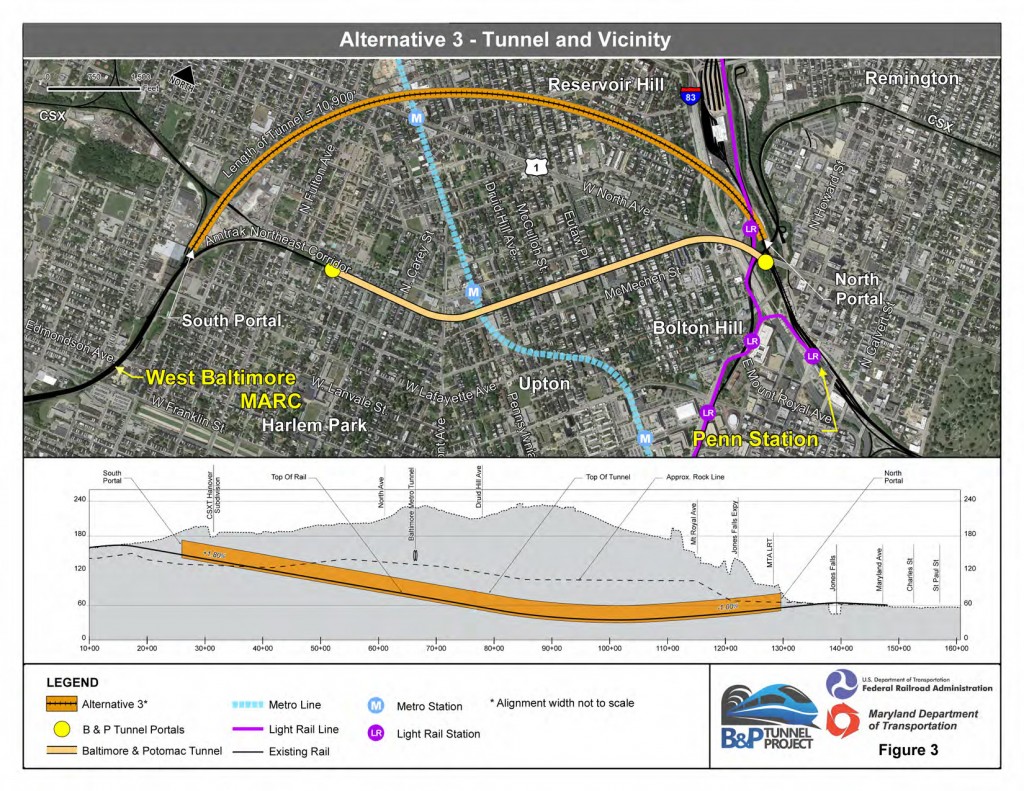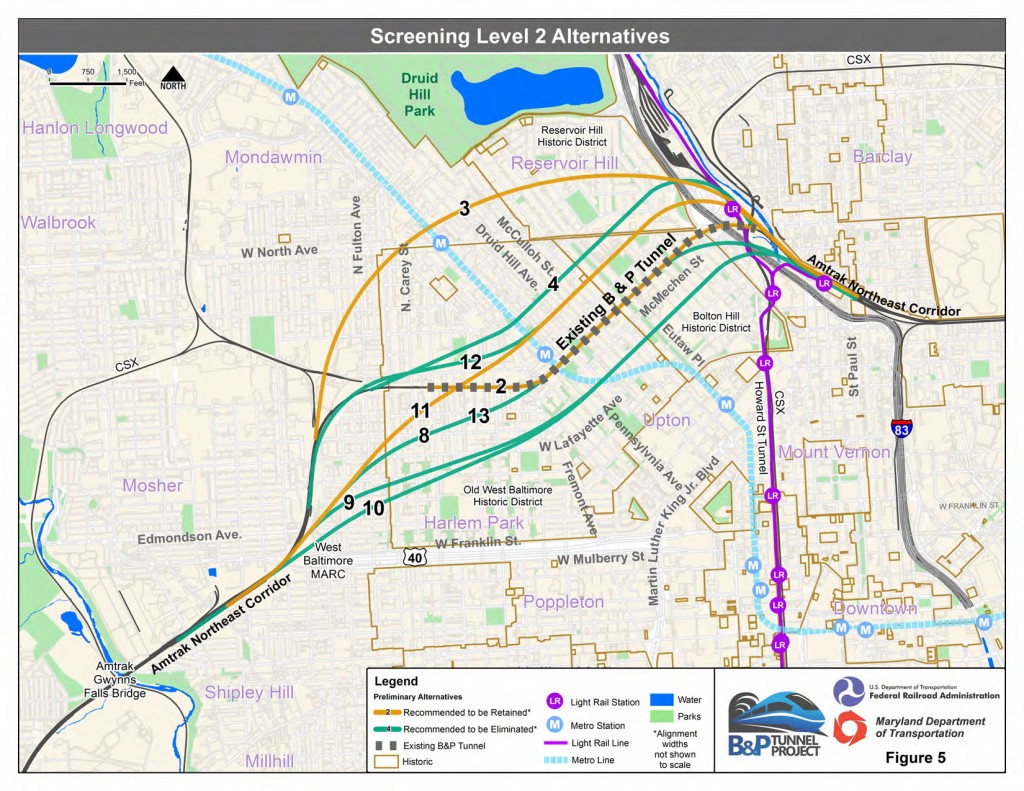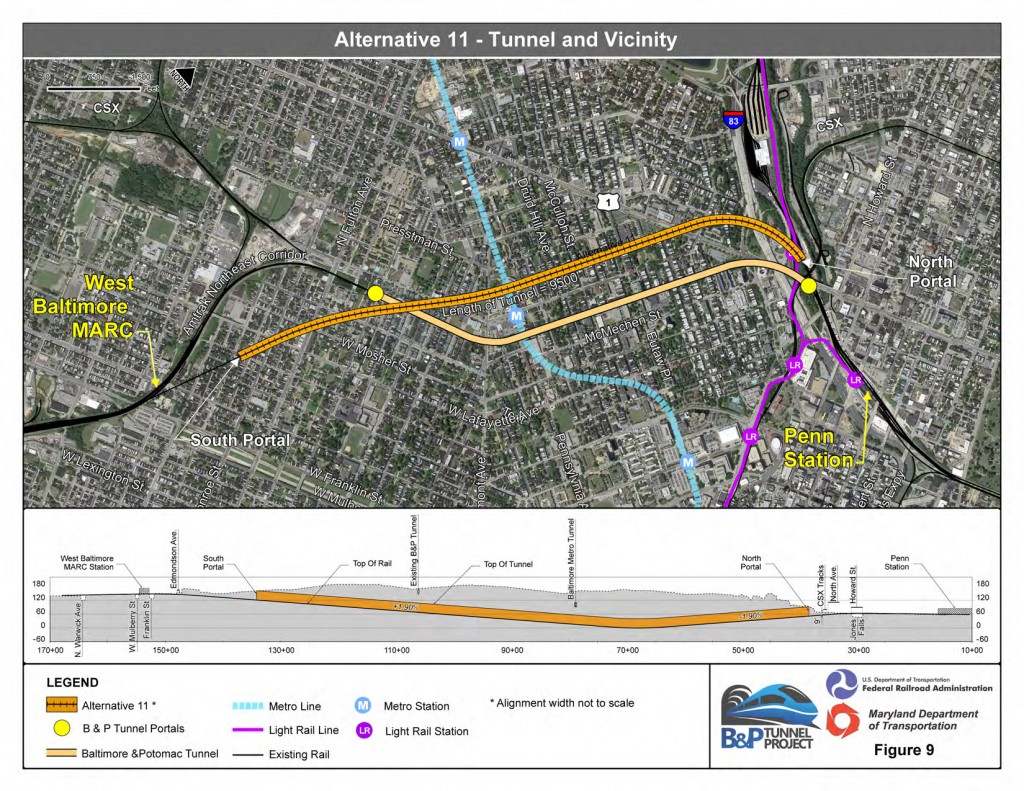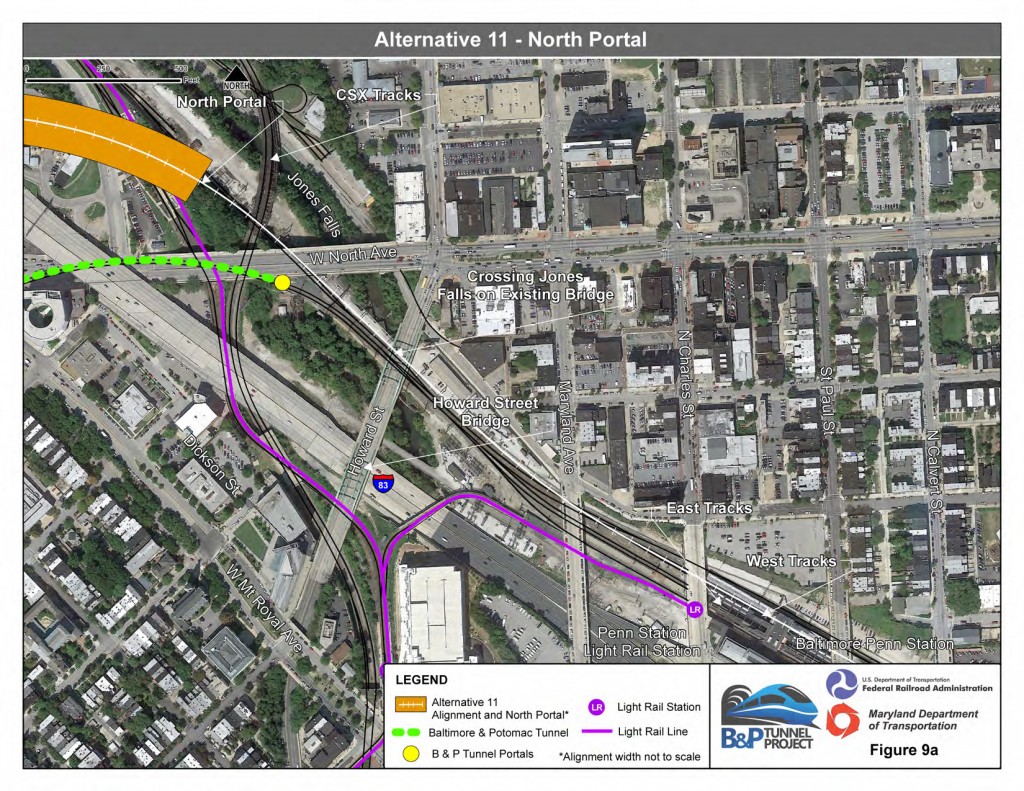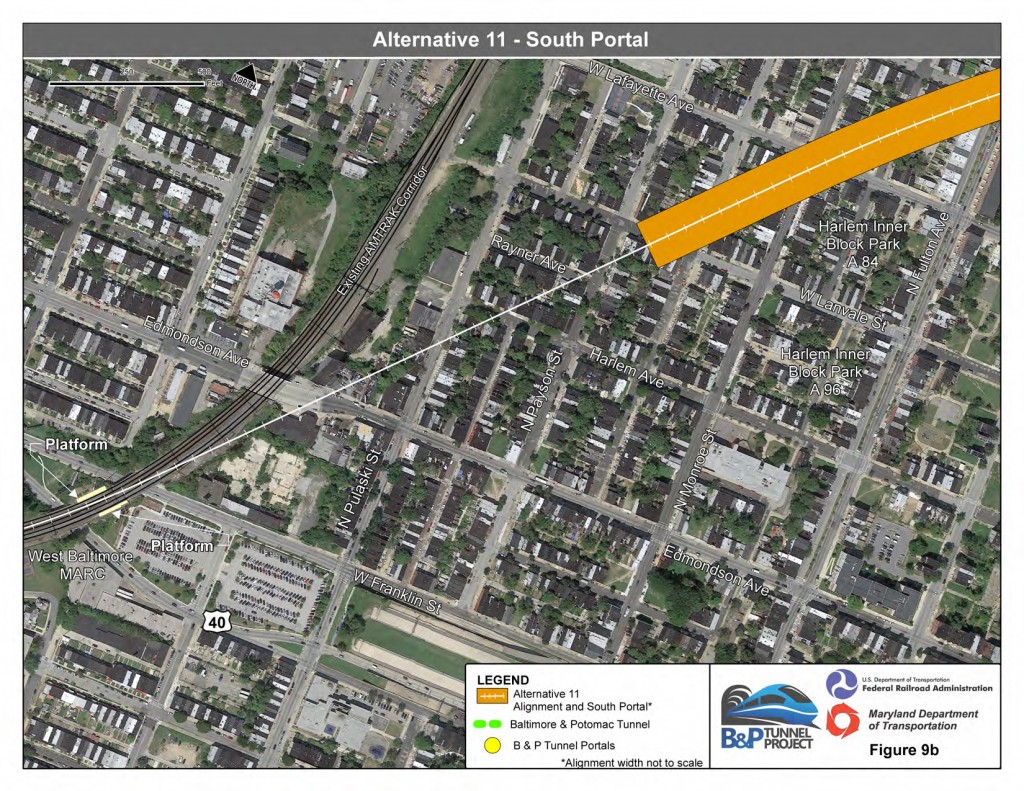Maps
Documents
Preliminary Alternatives Screening Report (Final) – October 2014
The Preliminary Alternatives Screening Report documents the preliminary alternatives phase of the project and is an important step for developing the project alternatives that will be evaluated in an Alternatives Report and the Environmental Impact Statement. The PASR presents the process by which an initial range of 16 preliminary alternatives were identified, including an alternative suggested by the public at the October 29, 2014 open house. The alternatives were evaluated using screening criteria and narrowed to four alternatives to be carried forward for further design development and environmental evaluation.
Previous studies on Baltimore’s rail network and the Northeast Corridor are available on the B&P Tunnel Project website.
Related News
- 141-Year-Old Baltimore & Potomac Tunnel Topic Of $60M Federal Study, June 12, 2014, CBS Baltimore
- Options for B&P tunnel replacement narrow as Amtrak considers future, November 19, 2014, Baltimore Sun.
- From vibrations to mosquitoes, plans to replace B&P tunnel draw concerns, December 9, 2014, Baltimore Sun.
- Amtrak CEO says B&P tunnel replacement study may be ‘waste of time’ given lack of funding, December 19, 2014, Baltimore Sun.

